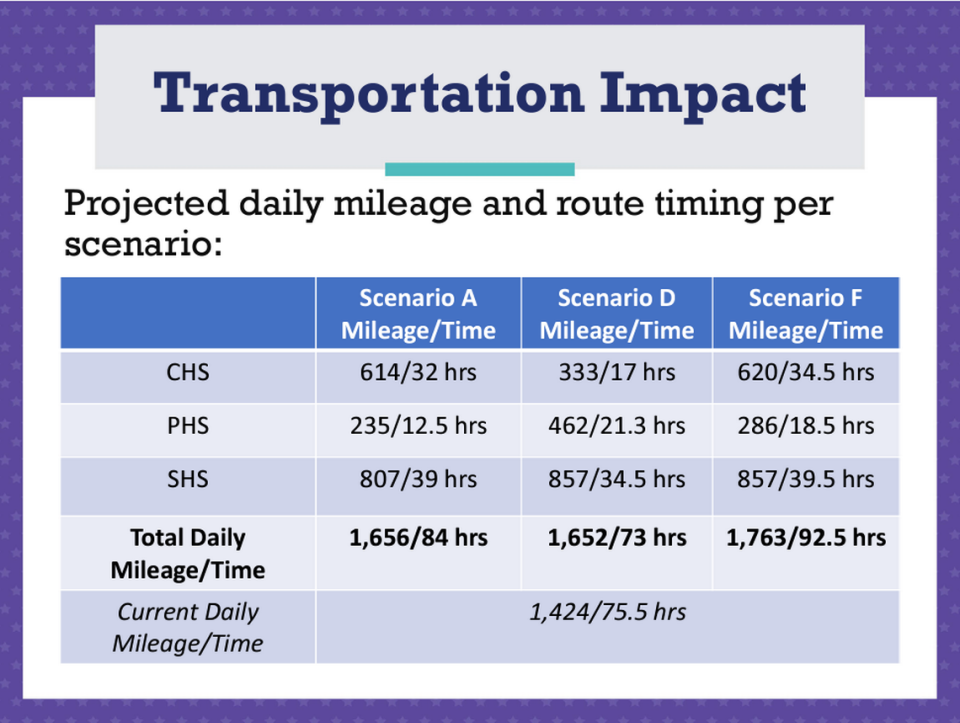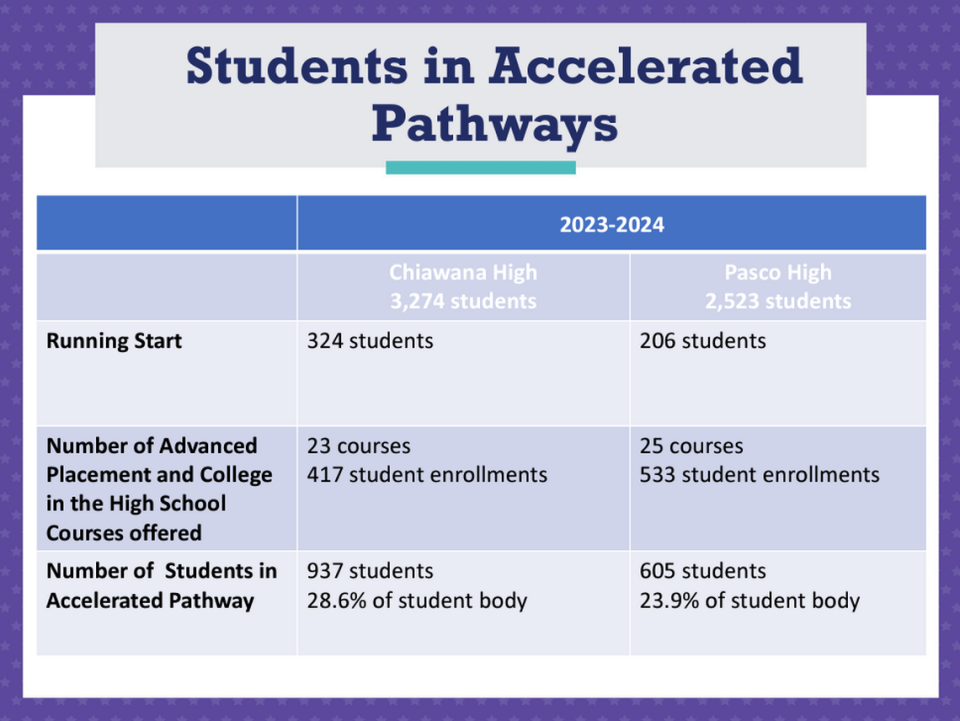A ‘step backwards?’ Pasco adopts controversial new high school attendance boundaries
The Pasco School Board adopted a new high school boundary map this week that effectively ends east Pasco busing to Chiawana High School.
Those students — many of whom come from low-income backgrounds — will instead attend class at the older Pasco High School starting in the 2025-26 school year.
The board voted 4-1 at its regular meeting Tuesday to approve a map — Scenario D — redrawing the district’s comprehensive high school attendance boundaries to include it’s new third high school. Sageview in west Pasco is under construction and will open in fall 2025.
With this move, the board has given power to proximity — a guiding principle that over the last nine months of discussion most families and community members said is a top priority.
Students at the three high schools will spend about 2.5 fewer hours each day on the bus than they are currently being taken to Chiawana and Pasco High. Bus drivers will log about 1,652 miles a day — an increase of about 230 miles — over 35 bus routes.
Low-income students
The new boundaries also are expected to increase the share of low-income students attending Pasco High School — from 74% to 86% — in a move some parents and former students have called a “step backwards” in history and have compared to segregation.
Nearly all students attending Pasco High also will identify as Latino or Hispanic, with its share of that population increasing 10 percentage points up to 93%.
A majority of K-12 students — roughly 51% — living within the new Pasco High boundaries will be English language learners, too.
Julie Pluff, a member of the Pasco School District boundary revision committee, said at Tuesday meeting that it was impossible to develop a boundary scenario that addressed both priorities — proximity and balanced demographics.
“We tried and we tried and we tried, and it was heartbreaking to all of us that we couldn’t do it,” said the mother of six, who says her family would not be impacted by the three maps presented to the board.
Pluff then raised a printed graph showing an overwhelming number of feedback responses last year mentioning “proximity” as a priority for forming boundaries.
“If you don’t listen to what the community wants, all your work you’ve done with these elementary school boundaries in the past is going to go out the window. They’re not going to trust you as a board anymore,” she continued.
Under the passed scenario, 1,870 students will attend Chiawana, 1,626 will attend Sageview and 1,576 will attend Pasco High in fall 2025.
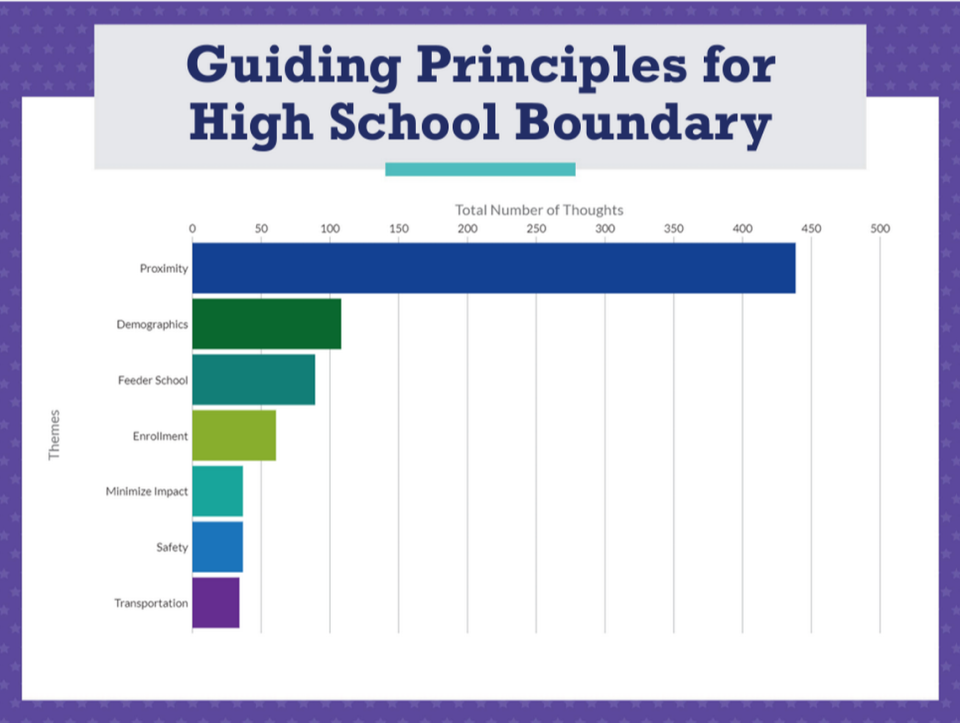
Proximity vs demographics
Here is what the racial makeup of each school will look like under Pasco School District’s new high school boundaries:
Pasco High School: 93% Hispanic, 3% White, 4% other. Low income: 86%.
Chiawana High School: 63% Hispanic, 30% White, 7% other. Low income: 51%.
Sageview High School: 62% Hispanic, 31% White, 7% other. Low income: 54%.
Board President Amy Phillips and board members Steve Simmons, Steve Norberg and John Kennedy voted in favor of Scenario D. Board member Amanda Brown was the sole dissenting vote.
She said she had “serious misgivings” about that plan.
“Data states that high-poverty schools experience lower test scores, lower teacher retention, which ends up being lower teacher performance,” Brown said.
Research reviewed by the Tri-City Herald showed a higher density of low-income students at Pasco High could lead to worse academic achievement. Poor students in mixed-income schools showed 30% more growth in test scores over their four years in high school than peers in schools with higher concentrations of poverty.
Current and former Pasco High students have been vocal about reporting fewer resources and fewer academic opportunities than their peers attending Chiawana.
They say a “poverty stigma” persists at their school since Chiawana opened 15 years ago.
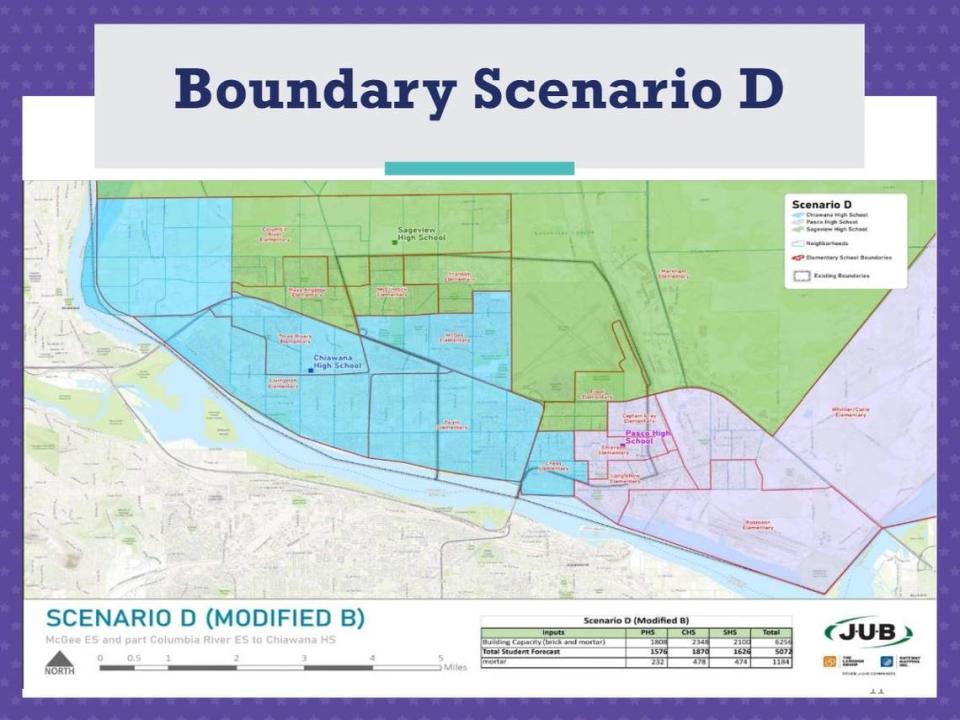

Brown recently rode along with East Pasco students who bus to Chiawana High.
“All of them said, ‘I don’t want to go to Pasco High. I want to keep on going to Chiawana.’ They’re perfectly fine with being bused across the city. And, like I said, it’s a 10-minute ride,” she said.
Brown previously supported Scenario F, which would have retained east Pasco busing to Chiawana, the state’s largest high school by enrollment, and would have expanded Pasco High’s boundaries into whiter neighborhoods west of Highway 395.
That scenario would have kept Pasco High’s share of low-income and Hispanic students about what it is today. Currently 83% of Pasco High students identify as Hispanic or Latino, and 74% come from a low-income background.
But it also would have fed students attending both McGee Elementary and McLoughlin Middle School — two of the school district’s oldest building — into the 70-year-old Pasco High.
“Personally, coming from me as a board member, proximity is a big deal and I think Scenario D best fits our district at this time,” Simmons said.
‘Perfect proximity’
Kennedy felt “very torn” between Scenarios D and F, saying he felt the community division with the two competing interests. He concluded he would “reluctantly approve” Map D since proximity was shown to be the clear priority.
“If this board goes with Map D, it just gives extra emphasis, if that’s possible, for this board and for this district to make sure there is an equitable distribution of resources, of support, of grace for Pasco High. Because Map D does present additional challenges to Pasco High, potentially, if these numbers are realized over the short, medium and long term,” he said.
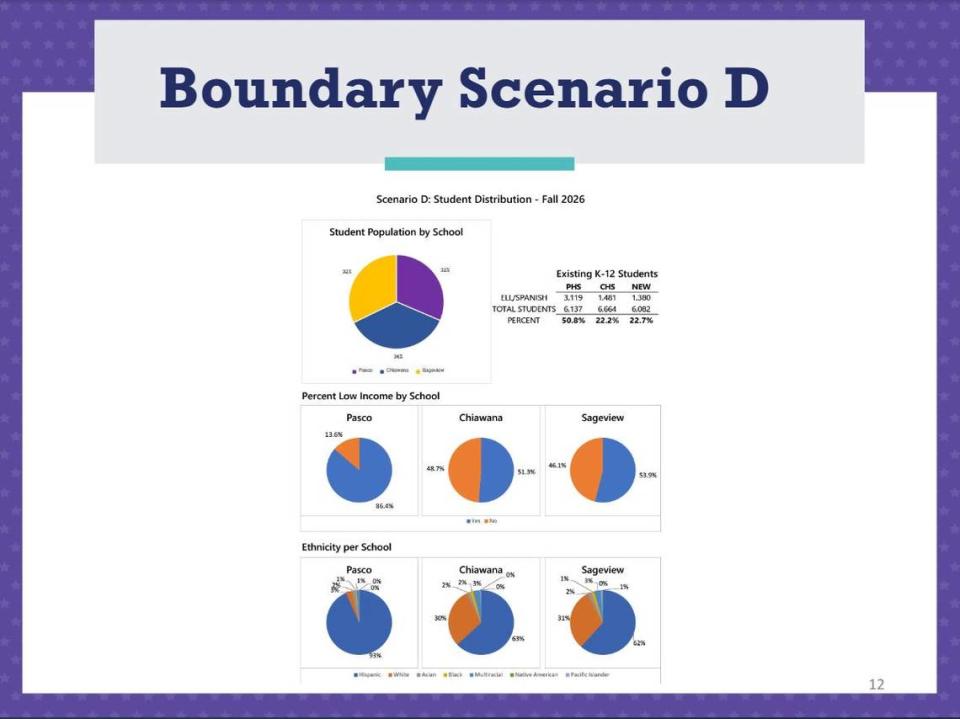
Phillips said research has shown impoverished schools can overcome academic achievement gaps and resource inequities if district leaders are intentional in addressing them. Pasco High programs and athletics remain top notch, she said, despite negative perceptions of the school.
“We have many, many schools across the United States that have proven that ‘low-income’ doesn’t have to mean ‘low achievement.’ So, I love that there is hope,” she said.
“Lowering the school size is going to help, in and of itself,” she continued.
Phillips also cited the 2007 U.S. Supreme Court case Parents Involved in Community Schools v. Seattle Public Schools as a reason why the district didn’t consider ethnicity specifically in the school boundary revision process.
That court action put a stop to racial integration policies Seattle schools had in place to bus students across town in an effort to give students — regardless of income or race — an equal chance at learning opportunities, reports the Seattle Times.
The end of those busing practices resulted in widening achievement gaps between Black and white students over the last decade and the highest rates of racial segregation seen since the 1980s.
But Phillips touted Seattle’s boundaries as providing “perfect proximity” that strengthen and enable families and communities.
“The family is the backbone of this country and the society. When we do what is best for families, we do what is best for our kids — and when we strengthen families, we empower kids,” Phillips said, reading from a sheet. “And I believe proximity helps strengthen families, it helps enable them and it helps them do all they can.”
Superintendent Michelle Whitney said she has heard concerns of program inequities at Pasco High School and has a plan to address them.
Both Chiawana and Pasco High have a similar share of their student population enrolled in accelerated pathway opportunities, including Advanced Placement and College In The High School courses, as well as Running Start.
